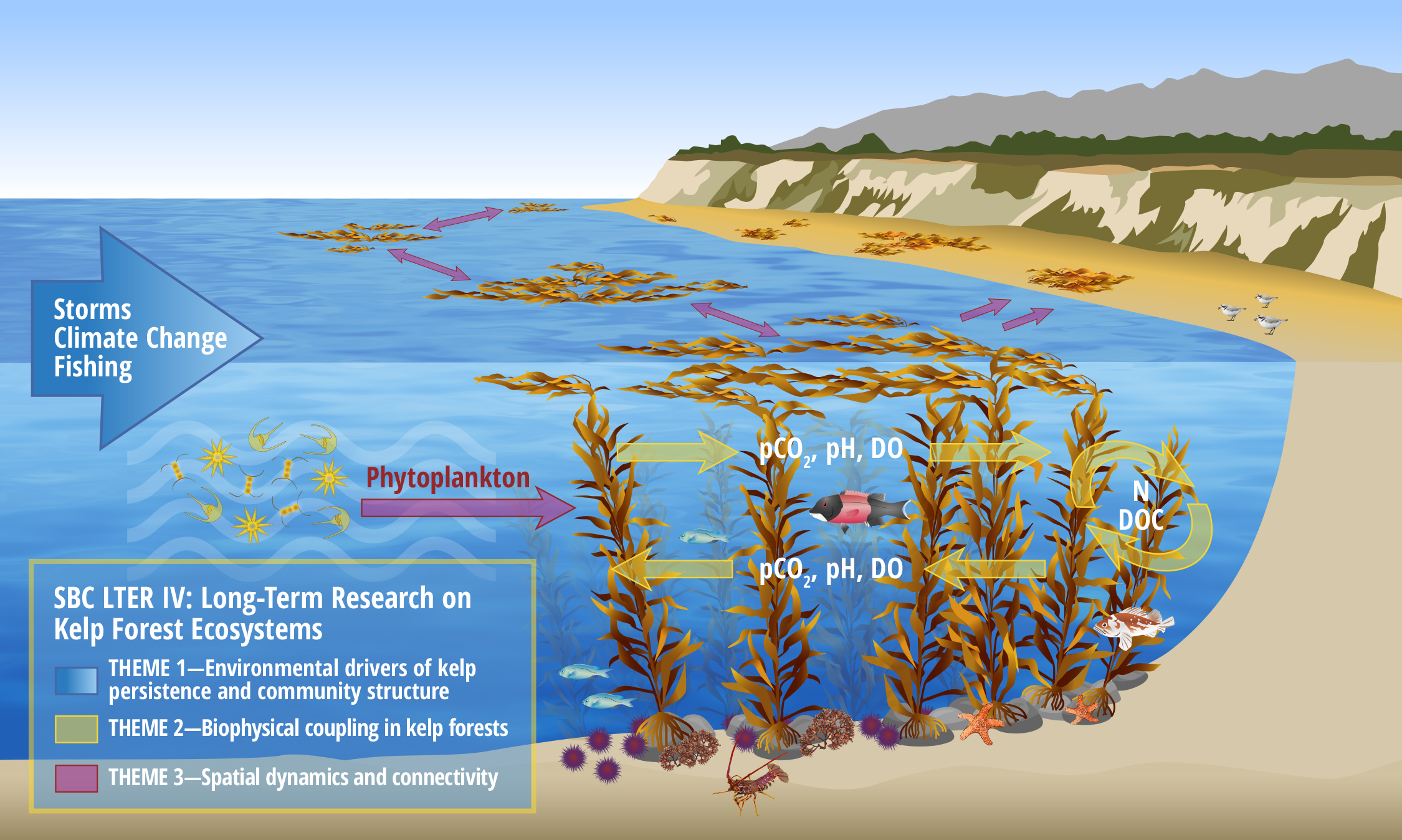SBC LTER Research
How do natural and human drivers influence giant kelp dynamics and alter the long-term structure and function of kelp forest ecosystems?
Giant kelp is a relatively short-lived foundation species in a setting of long-term environmental change and human use. Our three research themes are linked in a conceptual framework by the causes and ecological consequences of the kelp dynamics.
Kelp forests are connected to each other and to the coastal ocean and intertidal beaches via material exchange. Predicting the causes and consequences of kelp forest responses to oceanographic variability requires integrated studies of a wide range of physical, chemical and biological processes in the water column within and outside of the kelp forest, on the seafloor and on adjacent beaches. Thus, integration across all three themes is a natural and necessary requirement for advancing a predictive understanding of how kelp forests respond to oceanographic variability now and into the future.
Our research advances a predictive understanding of how disturbance, oceanographic variability and human actions (e.g., fishing and coastal development) alter the structure and function of kelp forest ecosystems to identify the mechanisms that underlie these processes.

Conceptual framework for SBC IV illustrating the three major research themes that integrate across populations, communities and ecosystems to address the overarching question “How do natural and human drivers influence giant kelp dynamics and alter the long-term structure and function of kelp forest ecosystems?” Arrows are color coded by research theme.
- Environmental drivers of kelp persistence and community structure
- Dynamic biophysical coupling in kelp forest ecosystems
- Spatial dynamics and connectivity of kelp forests and adjacent ecosystems